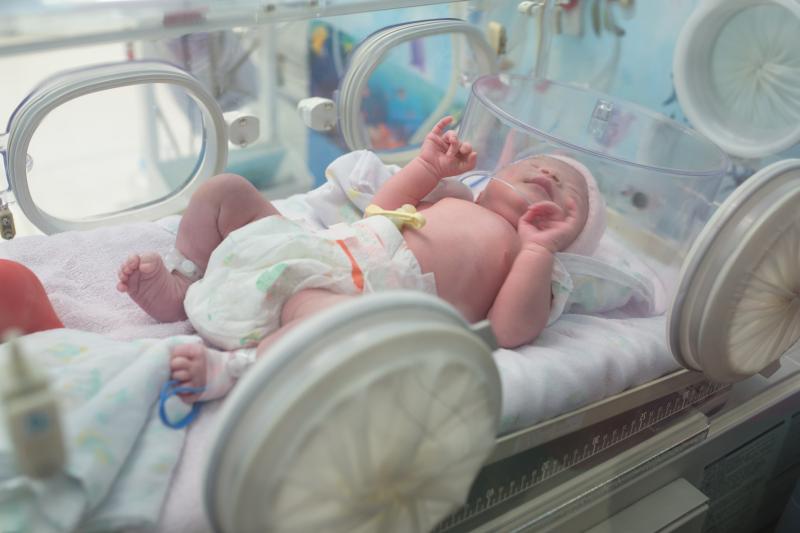
While the 2019 coronavirus disease (COVID-19) is generally mild in children, infants appear to be particularly susceptible to severe and critical infections, a new study has found.
“To the best of our knowledge, this is the first retrospective study on the epidemiological characteristics and transmission dynamics of children’s COVID-19 in China,” said researchers. “Children at all ages were sensitive to COVID-19, and there was no significant gender difference.”
Of the 2,143 children (median age, 7 years; 56.6 percent male) enrolled in the study, only 34.1 percent (n=731) had laboratory-confirmed COVID-19. The rest were only suspected cases due to exposure history and clinical symptoms, which included fevers, respiratory symptoms, digestive symptoms or fatigue. Disease severity was also assessed according to the above criteria, with the addition of chest imaging and laboratory tests. [Pediatrics 2020;doi:10.1542/peds.2020-0702]
For a huge majority of the participants, COVID-19 was nonthreatening. Nearly 95 percent had mild (50.9 percent) or moderate (38.8 percent) symptoms, or were asymptomatic altogether (4.4 percent).
Severe and critical COVID-19 was reported in at most 6 percent of the sample. However, disaggregating this according to age revealed a particular susceptibility of the very young. More than 10 percent of children below the age of 1 year ultimately developed severe or critical disease. In the 1–5-year age group, this percentage had dropped slightly to 7.3 percent.
COVID-19 grew progressively less dangerous as the children aged. Severe and critical symptoms were reported in only 4.2 percent, 4.1 percent and 3.0 percent in kids aged 6–10, 11–15 and at least 16 years, respectively.
“Why most of the children’s COVID-19 cases were less severe than adults’ cases is puzzling,” the researchers said. “This may be related to both exposure and host factors. Children were usually well cared for at home and might have relatively less opportunities to expose themselves to pathogens and/or sick patients.”
Other studies have postulated that because a child’s immune system is still developing, it may respond differently to the virus, effectively weakening its virulence. The angiotensin-converting enzyme II cell receptor in children, for example, may not yet be as optimized for binding to the virus as it is in adults. [Zhonghua Er Ke Za Zhi 2020;58:81-85]
Nevertheless, the results show that despite a generally more forgiving disease, children remain vulnerable to infection by the virus, the researchers added. “[T]he mechanisms for the difference in clinical manifestations between children and adults remain to be determined.”
The findings must be taken in consideration of important methodology limitations. First is the relatively small number of children with test-confirmed COVID-19. This should be addressed in future investigations, with a specific focus on the clinical course of the disease in confirmed cases. Another important caveat is the limited ability of any snapshot study to capture an outbreak in progress.
“[S]ince the epidemic of COVID-19 is ongoing and rapidly evolving, many children affected still remain hospitalized,” the researchers said. “To gain a better understanding of children’s COVID-19, more detailed patient information, particularly clinical outcomes, should be collected in future studies.”